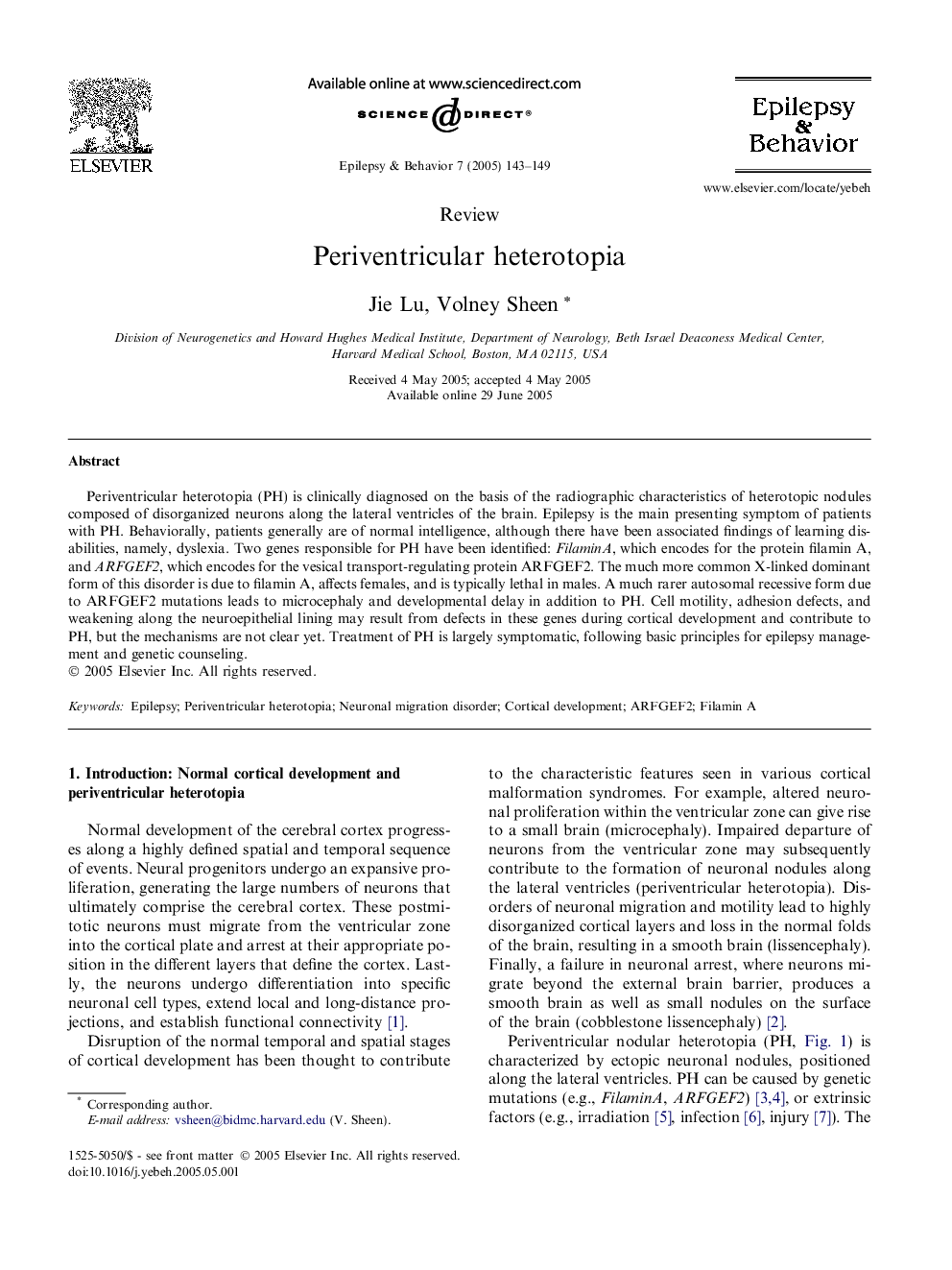| Article ID | Journal | Published Year | Pages | File Type |
|---|---|---|---|---|
| 9190347 | Epilepsy & Behavior | 2005 | 7 Pages |
Abstract
Periventricular heterotopia (PH) is clinically diagnosed on the basis of the radiographic characteristics of heterotopic nodules composed of disorganized neurons along the lateral ventricles of the brain. Epilepsy is the main presenting symptom of patients with PH. Behaviorally, patients generally are of normal intelligence, although there have been associated findings of learning disabilities, namely, dyslexia. Two genes responsible for PH have been identified: FilaminA, which encodes for the protein filamin A, and ARFGEF2, which encodes for the vesical transport-regulating protein ARFGEF2. The much more common X-linked dominant form of this disorder is due to filamin A, affects females, and is typically lethal in males. A much rarer autosomal recessive form due to ARFGEF2 mutations leads to microcephaly and developmental delay in addition to PH. Cell motility, adhesion defects, and weakening along the neuroepithelial lining may result from defects in these genes during cortical development and contribute to PH, but the mechanisms are not clear yet. Treatment of PH is largely symptomatic, following basic principles for epilepsy management and genetic counseling.
Keywords
Related Topics
Life Sciences
Neuroscience
Behavioral Neuroscience
Authors
Jie Lu, Volney Sheen,
